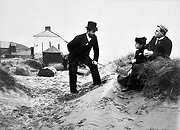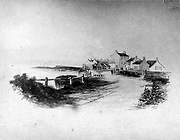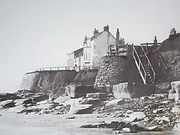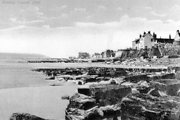 Hartlepool Sports & Leisure
Hartlepool Sports & Leisure
- Cinemas, Theatres & Dance Halls
- Musicians & Bands
- At the Seaside
- Parks & Gardens
- Caravans & Camping
- Sport
 Hartlepool Transport
Hartlepool Transport
- Airfields & Aircraft
- Railways
- Buses & Commercial Vehicles
- Cars & Motorbikes
- The Ferry
- Horse drawn vehicles
 A Potted History Of Hartlepool
A Potted History Of Hartlepool
- Unidentified images
- Sources of information
- Archaeology & Ancient History
- Local Government
- Printed Notices & Papers
- Aerial Photographs
- Events, Visitors & VIPs
 Hartlepool Trade & Industry
Hartlepool Trade & Industry
- Trade Fairs
- Local businesses
- Iron & Steel
- Shops & Shopping
- Fishing industry
- Farming & Rural Landscape
- Pubs, Clubs & Hotels
 Hartlepool Health & Education
Hartlepool Health & Education
- Schools & Colleges
- Hospitals & Workhouses
- Public Health & Utilities
- Ambulance Service
- Police Services
- Fire Services
 Hartlepool People
Hartlepool People
 Hartlepool Places
Hartlepool Places
 Hartlepool at War
Hartlepool at War
 Hartlepool Ships & Shipping
Hartlepool Ships & Shipping

Carr House
The name 'Carr' may have come for the Scandinavian for 'copse' so the meaning of the name would have been 'house in the copse'.
The Bishop of Durham gave lands to Merton College in Oxford when it was founded in 1264. Part of the land was the area around Carr House.
Before Mr William Thompson built Carr House in the 1820s there had been a previous Carr House on the same site. The original building had sometimes been known as Blue Houses because it had been roofed with blue tiles.
In 1709 part of a wreck had washed ashore at Carr House, another in 1727 and in 1729 a mast.
In 1766 the freeholder of Carr House was Robert Chilton.
Newcastle Courant February 21st 1795:
'To be sold by private contract, an eligible estate, called CARR HOUSE, in the Parish of Stranton and County of Durham containing 215 acres of land, or thereabouts, part freehold and part held by lease unders the Warders and Scholars of Morton College (Merton College), Oxford. Together with a house and an acre of land at Seaton and ten stints on the Snook and a right to three undivided fourth parts of one eighth part of and in the Manor of Seaton Carew. The farm-house and buildings are in good and convenient repair. The freehold pays a modus in lieu of tythes. N. Johnson (the tenant) will show the premises and for further particulars apply to Messrs Hopper, Attorney at Law, Durham. N.B. This will be no more advertised.'
The tenant was most likely Nicholas Johnson whose family had long been associated with Toft House (farm).
Known as both Carr House and Carr Houses by the drawings and photos that survive, it appears that there was either one very large building with the roofs at different levels or two attached buildings. Newspaper advertisements listed the property as two separate dwellings and name occupiers as a different family living in each of two properties. The exception is an advertisement of 1834 which advertises 'Half of Carr House.'
General Hue and Cry June 24th 1820:
SEA BATHING
'Two neat and commodious dwelling houses called CARR HOUSES situated on the sea banks within a quarter of a mile of Seaton Carew, and little more than a mile from Hartlepool, places much resorted to in the summer season by families of the first distinction, each containing a dining and drawing room, housekeeper's room, a good kitchen, pantry and six good lodging rooms with detached apartments for the menservants, large coach house and a seven stalled stable. A bathing machine upon the beach within 50 yards of the front door. The lodging commands a beautiful prospect of the Tees Bay, the Yorkshire Hills and places adjoining. A cow with hay, corn and grass, may be had if wanted.'
Durham Chronicle July 18th 1834:
SEA BATHING
'The Half of Carr House, near Seaton Carew
TO BE LET FOR SEA BATHING IMMEDIATELY.
THE UNOCCUPIED PART of the HOUSE contains a Dining and Drawing room, Kitchen, Cellar, Butler's Pantry, and Rooms for the convenience of Twelve Beds with a detached Kitchen if required; also a suitable Coach-house and Six-stalled Stable.'
Apply to Mr Wm Thompson, Dyke House, near Hartlepool.--Dyke House July 16th 1834.
William Thompson is mentioned as still having an interest in Carr Houses until he died in February 1851. From at least 1839 until his death in 1843 Edward Thomas Copely lived in one of the houses. John Stephenson, farmer, lived in one house from 1841, he died in 1873 aged 57. Henry Casebourne in the other from 1847 to 1887. Joseph Robinson is recorded as living in one of the houses from 1879 until at least 1887. William Bainbridge is recorded as having been a farmer there in 1914. Others that are mentioned as living at Carr House are S Barstow and James Perry.
In July 1887 a fire broke out in the cow-byre of Carr House farm. Robert Taylorson of West Hartlepool was passing at about midnight when he saw the flames. He woke Henry Casebourne's household and Joseph Robinson's family and then alerted PC Drow who in turn alerted the fire brigade. Between the two families and the fire brigade the fire was extinguished. A bull and a calf were injured. The fire had been caused by a tramp going into the building with a lighted pipe.
Over the years various people had lived in Carr House cottages which were many decades older than the 1820s built buildings. Many would have been farmhands or fishermen. Cornelious Hodgson was a fisherman who lived in one of the cottages. In 1897 his young son was killed when he was scalded with boiling water.
The cottages were condemned in 1900 when it was discovered that 35 people were living in them sharing only one water tap and two privies between them. The cottages were pulled down in 1904. 1919 Carr House was purchased by the Corporation and the West Hartlepool Town Council put forward a proposal to pull it down because it was in a poor state of repair. The proposal met with strong opposition and it was suggested it could be made tenantable at a cost of between £250 to £350. In 1924 another proposal was put forward to pull it down. By this time it had become an eyesore and in 1925 it was demolished and the land levelled.
Cliff House was to the north of Carr House and was removed by the North-Eastern Railway Company because it formed an awkward angle on the road leading to Seaton Carew. In about 1815 Cliff House was occupied by Mr Wharton JP of Durham. It was said that local smugglers occasionally took his horses and those from surrounding farms. They would then be worked through the night and returned to the stables exhausted. Although Mr Wharton was a JP the smugglers were so numerous and powerful in the area he was afraid to take any action against them for fear of reprisal.
Related items :
 Carr House cottages
Carr House cottages
 Created by James Whitehead Pattison
Donated by Bowes Museum, Barnard Castle, County Durham
Created by James Whitehead Pattison
Donated by Bowes Museum, Barnard Castle, County DurhamPart of the Pattison's Photographs collection
Dated 1888
Captain Joe Bunting (in the top hat) talking to Customs House Manager Willliam Robert Staveley (born 1839, Sussex) and his sister near Carr House cottages. Carr House & the cottages were on the edge of the cliff a little further along from The Green. They were demolished in 1904.
More detail » Carr Houses
Carr Houses
 Created by Thomas Thorpe
Donated by Bowes Museum, Barnard Castle, County Durham
Created by Thomas Thorpe
Donated by Bowes Museum, Barnard Castle, County DurhamPart of the Part of the Pattison's Photographs collection
Dated 1848
A sketch by Thomas Thorpe looking towards the buildings north of the Green. Carr House farm & cottages are depicted on the seaward side of the view. This came from Margaret Lawson's book that was in the Pattison collection.
Margaret Lawson was born in 1841 and was the daughter of John Lawson, vicar of Holy Trinity Church.
More detail » Looking south along the beach
Looking south along the beach
 Created by Thomas Thorpe
Donated by Maureen Anderson
Created by Thomas Thorpe
Donated by Maureen AndersonDated 1848
From an etching in 1848 by Thomas Thorpe of Darlington. Thomas tried to sell his work in Hartlepool & Seaton but having no success he returned to Darlington.
Carr Houses can be seen on top of the cliff overlooking the beach.
I believe Hartlepool Museums have the original of this work in their collection.
More detail » Old view of Carr Houses
Old view of Carr Houses
 Donated by Bowes Museum, Barnard Castle, County Durham
Donated by Bowes Museum, Barnard Castle, County DurhamPart of the Pattison's Photographs collection
Dated 1866
A wonderful old photo of Carr Houses and cottages and the steps to the beach in April 1866. This would have given a good vantage point for ships being wrecked or stranded on Longscar Rocks. The cottages were demolished in 1904 and Carr House in 1925. Eventually the cliff was levelled & improvements made between the Green and the beach.
More detail » Seaton Carew 1861
Seaton Carew 1861
 Donated by Hartlepool Museum Service
Donated by Hartlepool Museum ServiceCarr House on the Cliff above Carr House sands (almost opposite the green) House now gone and Cliff leveled off.
More detail »



